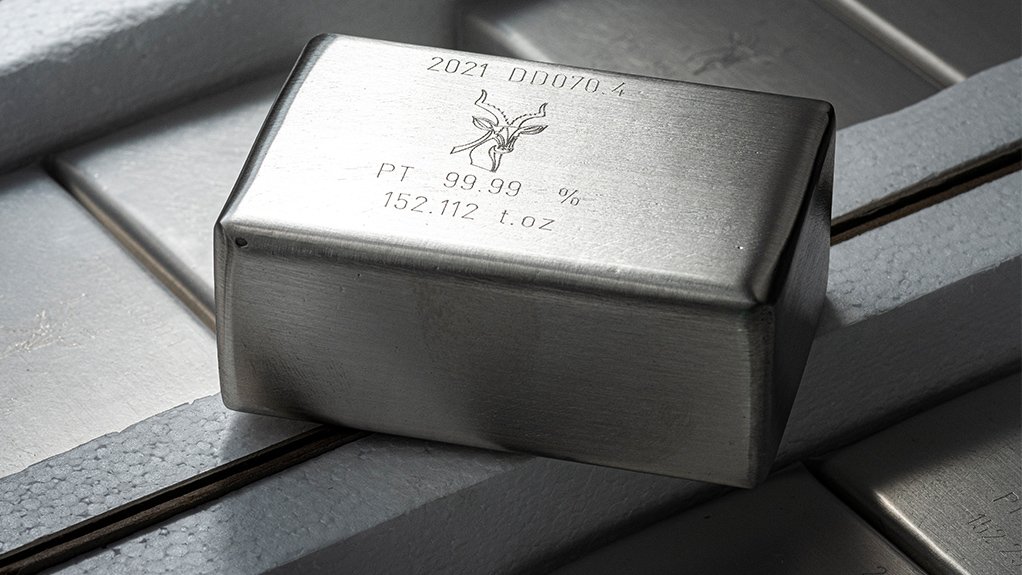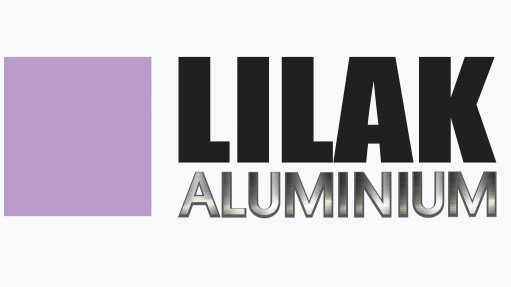PGMs demand may taper off despite robust automotive demand forecast
Global demand for platinum group metals (PGMs) is forecast to taper off beyond 2030, despite a robust outlook for increasing automotive sales, according to PGMs producer Impala Platinum (Implats) corporate affairs executive Emma Townshend, who addressed a PGMs students colloquium hosted by the Department of Trade, Industry and Competition, in Pretoria, on October 20.
“Legislation is shifting more from focusing on engine-out emissions to decarbonisation, resulting in very strict government policies that are forcing the adoption of electric fleets – and battery electric vehicles don't need PGMs,” she explained.
She revealed that Implats’ platinum, palladium and rhodium (3E) PGMs demand mix during 2021 leaned 63% towards the automotive sector, with 24% coming from the industrial sector and 12% going into jewellery.
Townshend noted that, while the electrification of vehicles globally was expected to have a limited impact on PGMs in the medium term, it posed an existential demand threat beyond 2030 with the envisaged phasing out of internal combustion engines.
Electric vehicle numbers are expected to rise from ten-million in 2020 to 100-million in 2030, which makes up about 7% of the global fleet of vehicles.
“The path of electrification has created very substantial demand forecasts. However, in our mind, it's creating uncertainty in terms of production plans and the outlook for South African production in the medium term,” she said.
She noted that South African PGM producers typically produce about twice as much platinum as palladium.
“One of the big trends that's hurt platinum over the past decade is the substitution of diesel for gasoline engines, which is continuing. Diesel market share in Europe has halved over the last five years.
“Meanwhile, hybrids, which are electrified, are actually positive for PGM loadings. We estimate PGM loadings are 10% to 15% higher for hybrid engines versus pure combustion engines,” Townshend explained.
However, she said that, thanks in part to research and development done in collaboration with diversified mining major Sibanye and German chemicals company BASF, Implats expected to see the switching of palladium with platinum in gasoline engines, which she said would ignite a rerating of the platinum price relative to palladium.
Townshend noted that, in South Africa, current revenues were being driven by record palladium and rhodium pricing, but the threat of electrification meant that those pricing tailwinds were going to fade over time.
She noted that the existential threat of electrification, the wish to move away from labour-intensive, deep, capital expenditure intensive, conventional assets that perform poorly in terms of environment, social and governance metrics, had meant that capital expenditure from the industry had not accelerated in line with profitability, which had implications for future supply.
“Companies are focused on low-risk, low-cost, high-quality defensive production, but that doesn't necessarily give us the price security for the metals with the best demand outlook,” she said.
Western limb life-of-mine is a key potential risk to South Africa’s ability to produce and maintain its role as the driver of PGM markets in the future, Townshend said, noting that market development activities needed to carefully consider the “balancing of the basket”.
Townshend noted, however, that the hydrogen economy would play a key role in unlocking future demand for PGMs.
“When we look at the medium to longer term, we recognise the role that hydrogen can play in terms of hedging deteriorating automotive production. From a South African perspective, because the industry is nascent and still developing, we have an opportunity to develop with it.
“It's a huge opportunity for South Africa to play a leading role in terms of industrial development in the sector, which has meaningful demand implications for platinum, iridium and ruthenium in the future,” she said.
Article Enquiry
Email Article
Save Article
Feedback
To advertise email advertising@creamermedia.co.za or click here
Comments
Press Office
Announcements
What's On
Subscribe to improve your user experience...
Option 1 (equivalent of R125 a month):
Receive a weekly copy of Creamer Media's Engineering News & Mining Weekly magazine
(print copy for those in South Africa and e-magazine for those outside of South Africa)
Receive daily email newsletters
Access to full search results
Access archive of magazine back copies
Access to Projects in Progress
Access to ONE Research Report of your choice in PDF format
Option 2 (equivalent of R375 a month):
All benefits from Option 1
PLUS
Access to Creamer Media's Research Channel Africa for ALL Research Reports, in PDF format, on various industrial and mining sectors
including Electricity; Water; Energy Transition; Hydrogen; Roads, Rail and Ports; Coal; Gold; Platinum; Battery Metals; etc.
Already a subscriber?
Forgotten your password?
Receive weekly copy of Creamer Media's Engineering News & Mining Weekly magazine (print copy for those in South Africa and e-magazine for those outside of South Africa)
➕
Recieve daily email newsletters
➕
Access to full search results
➕
Access archive of magazine back copies
➕
Access to Projects in Progress
➕
Access to ONE Research Report of your choice in PDF format
RESEARCH CHANNEL AFRICA
R4500 (equivalent of R375 a month)
SUBSCRIBEAll benefits from Option 1
➕
Access to Creamer Media's Research Channel Africa for ALL Research Reports on various industrial and mining sectors, in PDF format, including on:
Electricity
➕
Water
➕
Energy Transition
➕
Hydrogen
➕
Roads, Rail and Ports
➕
Coal
➕
Gold
➕
Platinum
➕
Battery Metals
➕
etc.
Receive all benefits from Option 1 or Option 2 delivered to numerous people at your company
➕
Multiple User names and Passwords for simultaneous log-ins
➕
Intranet integration access to all in your organisation

















